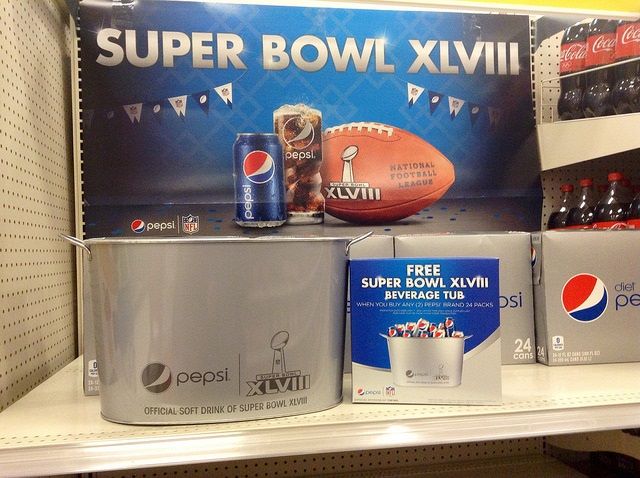Digital is vital to the success of any marketing strategy. Or is it?
It’s a bold statement but one that is only true if combined with traditional marketing, to really allow brands to effectively dominate the advertising space within their market place, regularly targeting and connecting with the consumer.
Before the technology and social takeover, brands were able to gently position themselves in front of the audience using traditional techniques such as newspaper ads, TV appearances or radio mentions – all mediums that had the ability to direct customers to a brand.
However, with the growing need for immediate information, and the changing ways in which consumers access it, brands have been forced to react, needing to dominate every advertising platform possible just to remain visible.
With this comes a marketing strategy overhaul, marrying the simplicity and effectiveness of traditional techniques with the instant value brought through digital channels.
The change in the customer approach, and in turn the sales journey, has caused brands to move forcefully into the digital world, whether ready to or not.
Although digital now makes up around 60% of marketing efforts, according to oursocialtimes.com, 13% of marketers still rely heavily on traditional methods, adamant they still achieve the desired results. It is studies such as this that prove the value of merging both traditional and digital techniques, to create a well-rounded, data led approach to customer engagement and brand positioning.
While we recognize the value of introducing and focusing on digital, one brand took this idea too far, reducing all activity to create just a digital strategy.
Social only: Pepsi’s near-death experience
Pepsi, one of the most recognized brands on the planet, made the controversial decision to remove all traditional elements from their marketing, instead relying entirely on social media to engage with their customers and position themselves against their biggest rival, Coca-Cola.
Pepsi previously had a solid strategy based on television advertising, showing their commercials during prime time viewing to gain the widest appeal. After 23 years of running ads during the Super Bowl, this was pulled with the budget moved entirely into social media.
External agency relationships were severed and the brand took on all marketing in-house in order to stay closer to the brand’s message. This was a radical move that left marketers across the globe horrified and taking bets on just how long the brand would stick with this strategy before relenting.

Image by Mike Mozart, available via CC BY-2.0
They didn’t have to wait long. Within a matter of months, the repercussions became clear as a large proportion of their audience were no longer targeted with the brand relying on a heavy social following to continue to market themselves. This one-dimensional strategy was short lived, and Pepsi quickly made a reappearance on television screens.
Despite the upset that stemmed from the now infamous Kendall Jenner advert, the brand is once again back in front of the target consumer.
As Pepsi struggled with the conflict between digital and traditional marketing methods, its biggest rival, Coca-Cola, was instead leading the way in a combined marketing strategy successfully launching a campaign that covered online and offline channels.
Showing them how it’s done
In 2013, Coca-Cola launched their ‘Share a Coke’ campaign that was a perfect blend of traditional and digital techniques designed to increase brand engagement and product sales.
Offline, customers were able to purchase personalized bottles, with more names available online, encouraging users to visit the website. The campaign was a success from the very beginning with consumers determined to collect every bottle they saw that had their name on it.
The campaign was consistently shared across social channels and social engagement resulted in 998m Twitter impressions and 235,000 tweets containing the hashtag, ‘Share a Coke’.
It is vital to nail your marketing strategy or you quite simply put your brand in jeopardy. The biggest lesson to learn from both Pepsi and Coca-Cola is that knowing your audience is key, something that Pepsi clearly didn’t, while Coca-Cola adopted multiple ways to actively address and engage with key members of their demographic.
Whatever your approach may be, you need to clearly identify what is going to work for your consumer, not just for you.
Digital is at the forefront of marketing right now as brands really see it as a way to directly target members of their audience, in so many different ways.
Owning the influencer game
Taking the digital approach that one step further, brands like Daniel Wellington and ASOS are focusing their efforts on using key players in the world of fashion and celebrity to help build their brand identity and to ultimately, drive sales.
The tactic is simple. Identify the influencers that speak directly to the audience, asking them to post regularly across social channels (predominantly Instagram) about a number of products. Sit back and wait for the demographic to build brand recognition and loyalty causing the orders to roll in.
Influencers have a lot of control over their followers, as the ordinary person becomes focused on attempting to emulate everything from what they wear, the places they visit, even adopting their views in some extreme cases. The passion that followers have for their ‘influencers’ of choice is at the heart of this marketing approach and the very reason for its success.
Daniel Wellington is now a key player within the watch market and has developed its brand identity through the use of carefully selected influencers, establishing themselves in the marketplace as a high-end watch designer favoured in celebrity circles.
As part of the brand’s approach, influencers and ‘celebrities’ such as the cast of Love Island and TOWIE, are paid to deliver regular Instagram posts about the watches, while offering followers money-off discounts with individual codes (a great way for the brand’s marketing team to identify which celebrity is most successful at turning followers into customers).

Instagram posts by Kendall Jenner and Carissa Smart, a fashion, lifestyle and flat lay photographer
Although this strategy may seem simple, there are still pitfalls. Are you sure you know your audience? Is Instagram really where they are? Are you using the right influencers/celebrities?
A lot of consumer research and data needed to take place before the strategy was implemented, to make sure that Daniel Wellington, a relatively new brand, was catapulted into the limelight for all the right reasons.
The approach has certainly paid off, however, with 1.3 million Instagram posts now using #danielwellington while the brand’s own account now has over 3 million followers. They also recently opened their first flagship store.
ASOS have followed suit, throwing themselves into the influencer game, having recently created ‘ASOS Insider’. A small number of fashion influencers are offered their own ASOS Instagram accounts, enabling them to regularly post ‘outfit of the day’ pictures, tagging the brands to allow followers to recreate their looks.
Cleverly, the post will also include links back to the ASOS website, serving as another gentle push for consumers to purchase the products.
ASOS use influencers that already have a strong following to grow a natural audience around the brand, easily growing the brand’s reach.
Both brands have executed the influencer approach perfectly and are now reaping the rewards for doing so, but this is not a one size fits all approach and it can be a difficult strategy to implement.
Before reaching out to the likes of the Kardashians or other reality TV heavyweights, however, you need to consider the following:
1. Identify your audience and be where they are
Identifying who your audience is, not just who you want them to be, is at the centre of the influencer strategy. How can you talk to them if you don’t know who they are and importantly, where they are?
2. Use influencers who will perfectly represent your brand and be able to speak directly to your demographic
Don’t just use high profile influencers or celebrities in the hope of gaining attention if they are not an advocate of your brand principles, or do not have the ability to speak directly to your targeted demographic.
3. Love and share user-generated content
Consumers like to feel valued, and recognized, by their favourite brands and the best way to do this is to encourage them to create their own content and recognize it across branded social platforms. This is something Daniel Wellington does well with its ‘pick of the day’ campaign.

4. Convert followers into customers – track use of discount codes, promotions, time of posts versus time of orders
Be sure to regularly track the performance of the campaign to really know if it is working. Influencer marketing can be pricey and you want to make sure you are getting a good ROI and importantly improving the performance of your business.
The type of marketing approach you take very much depends on who your demographic is, which will affect how they can be reached and encouraged to respond.
While more and more brands are becoming affiliated with digital marketing campaigns, there are still instances where traditional marketing is the only way to target the consumer – as Argos found out.
Taking it back to the old-school
Argos are a unique case in terms of the form of marketing they adopt. Typically, it is the brand that decides how they position themselves in their market place, taking either a traditional or digital approach to really get the attention of the target customer. This is not the case for the retail giant.
Argos are known for their catalogs: the physical database of the enormous number of products they sell, something that is really aligned with more traditional marketing techniques alongside all printed paraphernalia.
In 2012, Argos made the decision to stop their catalogs, instead encouraging customers to visit the website which naturally serves as an online version of the long-adored catalog. The customer base quickly revolted and Argos were forced to backtrack.
In late 2017, the brand began a second attempt at entering the digital space and started to test consumer demand in relation to the catalogs – as expected, this wasn’t very well received.
For Argos, the voice of their consumer was so loud that they were forced to sit up and take note. The consumer had a direct impact on the brand’s business model and the way in which they engaged with new and existing customers.
There will always be room for traditional techniques within modern marketing, and any savvy marketer will be aware of this. But what are the best ways to incorporate traditional within any strategy, in a modern, digital focused world?
1. Decide what works based on who you’re targeting
Whether it’s print-based adverts, press releases, or events, if it works for your demographic and can deliver your brand message, then don’t rule it out.
2. Don’t be afraid to give your brand a face
Networking is one of the oldest tactics, but also one of the most successful. Getting out there and meeting and greeting people can raise brand awareness and give your business a personality – ultimately gaining consumer trust.
3. Think about ROI
Traditional marketing can deliver a suitable ROI at a faster rate than digital, which is a big consideration for some brands, particularly start-ups and those with slightly smaller budgets.
Below are some examples of traditional techniques that still work!
- Press releases
- Networking/Speaking engagements
- Cold calling
- Print ads
- Event marketing
- Direct mail
- Business cards
As much as Argos wanted to fully immerse themselves in the digital space, they were unable to. Which begs the question, do consumers prefer the valued traditional methods?
While the answer isn’t as simple as just a straight yes or no, it’s clear that consumers still appreciate the traditional approach. This suggests that while brands need to be considerate of digital, they must be able to straddle both principles in order to really fulfil the purpose of marketing; targeting and appealing to the consumer to ultimately make for a successful business.
The golden child of marketing
In 2013, 02 brought us the ‘Be more dog’ campaign, a prime example of how to combine traditional and digital techniques to really deliver a message. The campaign meant the brand fought off strong competition from competitors, saw it win countless awards and most importantly, got people talking for all the right reasons.

Although there was little relevance between the campaign idea and mobile phones (in fact, there was no real connection) it was the unique angle that made it stand out and promote perfectly the relaunch of the brand’s new priority app.
There was no escape from this campaign – adverts ran across televisions and in cinemas, while users were targeted through geo-located mobile phone ads and YouTube and MSN had their homepages overtaken by a Ginger Cat attempting to ‘be more dog’. Its success was in its simplicity and the clever ways in which every possible consumer was targeted.
What can we learn from 02, and how can this approach be adopted within every business’ marketing plan?
1. Don’t be afraid to stand out
A big campaign can seem overwhelming, and the results are not always guaranteed, despite the weeks and months of planning that goes into them.
But, if done right, the rewards can be more than worth it. 02 chose a campaign idea that had little to do with mobile phones or indeed apps, but they executed something that got attention and the rest fell into place.
2. Think big – make it shareable
Content needs to be unique, shareable, something that will allow people to see your brand and understand the message trying to be delivered.
In this case, 02 wanted to be cool, edgy and vibrant, all of which were achieved within a matter of hours of the campaign launching – generating almost half a million YouTube views in the first 48 hours.
3. Again, where are your consumers?
02 understand that their consumers, both new and old, are everywhere and they needed to make sure that ‘be more dog’ was visible to them all. To do this, they cleverly combined both traditional and digital tactics to make sure no one was missed.
4. Look beyond the usual channels
Your current marketing strategy may be hugely successful, but at the same time, it might not be working.
It is easy to get stuck in a rut with either outcome, so don’t be afraid to consider all channels, and as recommended, merge the two disciplines to give your brand a broader platform when attempting to speak to the demographic.
Summing up
We’ve moved into an era where traditional and digital marketing methods have the ability to complement each other, allowing brands to increase the ways in which they reach the consumer.
However, it is so important to pick an approach that works for the consumer, rather than one that fits in with an ideal. Marketing’s very purpose is to allow brands to position themselves in front of the target demographic and if they are unreachable, or switched off to certain platforms, the marketing strategy becomes pointless.
We have seen some big brand names either get it absolutely right or spectacularly wrong, and each offers valuable lessons for those looking to dominate their marketplace.



